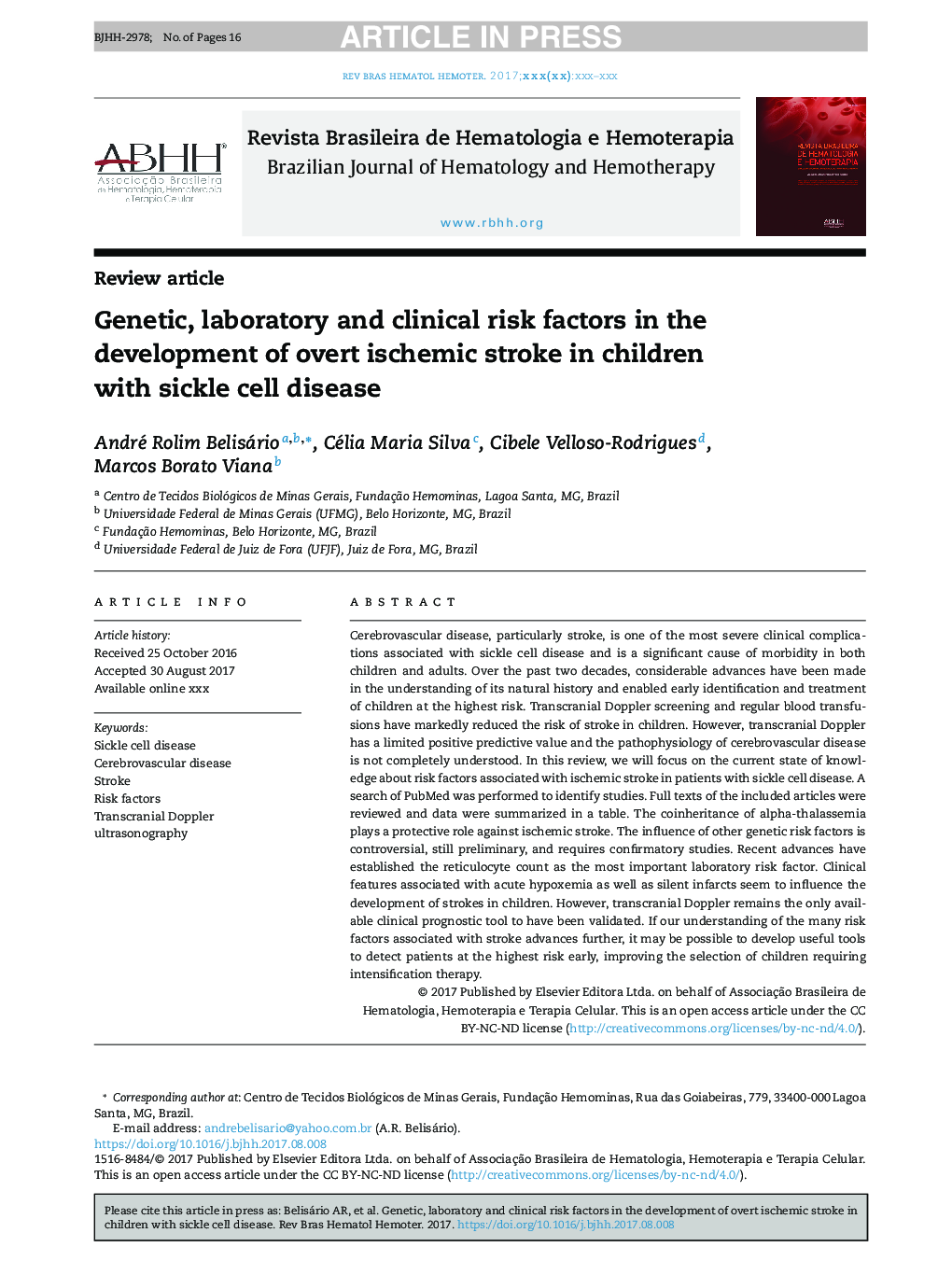| کد مقاله | کد نشریه | سال انتشار | مقاله انگلیسی | نسخه تمام متن |
|---|---|---|---|---|
| 8940815 | 1644846 | 2018 | 16 صفحه PDF | دانلود رایگان |
عنوان انگلیسی مقاله ISI
Genetic, laboratory and clinical risk factors in the development of overt ischemic stroke in children with sickle cell disease
ترجمه فارسی عنوان
عوامل ژنتیکی، آزمایشگاهی و خطر بالینی در توسعه سکته مغزی ایسکمیک منفی در کودکان مبتلا به بیماری سلول داسی شکل
دانلود مقاله + سفارش ترجمه
دانلود مقاله ISI انگلیسی
رایگان برای ایرانیان
کلمات کلیدی
بیماری سلولی صرع، بیماری عروق مغزی، سکته مغزی عوامل خطر، سونوگرافی داپلر ترانس کرانیال،
موضوعات مرتبط
علوم پزشکی و سلامت
پزشکی و دندانپزشکی
هماتولوژی
چکیده انگلیسی
Cerebrovascular disease, particularly stroke, is one of the most severe clinical complications associated with sickle cell disease and is a significant cause of morbidity in both children and adults. Over the past two decades, considerable advances have been made in the understanding of its natural history and enabled early identification and treatment of children at the highest risk. Transcranial Doppler screening and regular blood transfusions have markedly reduced the risk of stroke in children. However, transcranial Doppler has a limited positive predictive value and the pathophysiology of cerebrovascular disease is not completely understood. In this review, we will focus on the current state of knowledge about risk factors associated with ischemic stroke in patients with sickle cell disease. A search of PubMed was performed to identify studies. Full texts of the included articles were reviewed and data were summarized in a table. The coinheritance of alpha-thalassemia plays a protective role against ischemic stroke. The influence of other genetic risk factors is controversial, still preliminary, and requires confirmatory studies. Recent advances have established the reticulocyte count as the most important laboratory risk factor. Clinical features associated with acute hypoxemia as well as silent infarcts seem to influence the development of strokes in children. However, transcranial Doppler remains the only available clinical prognostic tool to have been validated. If our understanding of the many risk factors associated with stroke advances further, it may be possible to develop useful tools to detect patients at the highest risk early, improving the selection of children requiring intensification therapy.
ناشر
Database: Elsevier - ScienceDirect (ساینس دایرکت)
Journal: Hematology, Transfusion and Cell Therapy - Volume 40, Issue 2, AprilâJune 2018, Pages 166-181
Journal: Hematology, Transfusion and Cell Therapy - Volume 40, Issue 2, AprilâJune 2018, Pages 166-181
نویسندگان
André Rolim Belisário, Célia Maria Silva, Cibele Velloso-Rodrigues, Marcos Borato Viana,
